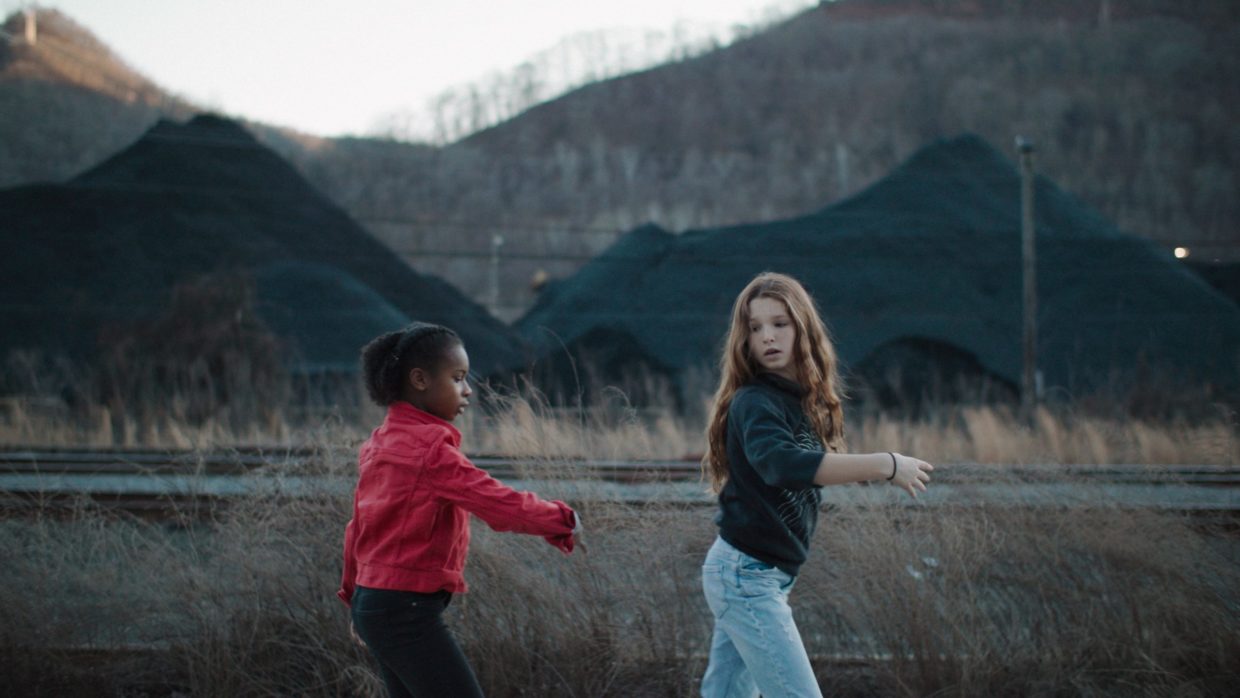 Back to selection
Back to selection
“We Initially Imagined It as a Rectangle That From the Left Starts Off Dark, Gray and Gloomy”: Editor Iva Radivojevic on King Coal
 King Coal
King Coal In Sundance NEXT selection King Coal, Elaine McMillion Sheldon employs a hybrid approach, blending contemporary imagery with archival material and poetic voiceover to explore the impact that coal — the substance and the industry — has had on Central Appalachia. Below, editor Iva Radivojevic, herself a filmmaker, discusses her collaboration with Sheldon on the picture.
Filmmaker: How and why did you wind up being the editor of your film? What were the factors and attributes that led to your being hired for this job?
Radivojevic: Elaine and I had known each other for about a decade prior to making this film, we met in 2013 when we were on Filmmaker Magazine’s 25 New Faces of Independent Film. We also worked briefly on a short film she made a few years ago. There’s always been mutual respect and admiration for each other’s work. King Coal marks a leap for Elaine in terms of her personal storytelling style and voice. With this film she was opening up to new possibilities and experimenting with magical realism and the language of fables. Elaine was aware I had recently made a film that lives in the realm of magical realism, and this collaboration therefore seemed like a natural fit. King Coal is also the first film in which Elaine addresses the viewer with voiceover narration. Narration and writing navigate all my films, the films I’ve directed. It’s a language I’m well versed in; personal and introspective reflections, poetic unions of image and verse. Such attempts require a distinctive flow, with refined accents. These are my strengths.
Filmmaker: In terms of advancing your film from its earliest assembly to your final cut, what were goals as an editor? What elements of the film did you want to enhance, or preserve, or tease out or totally reshape?
Radivojevic: At the very beginning when we started theorizing about the film, we discussed and pondered on what shape the film would have. We initially imagined it as a rectangle that from the left starts off dark, gray and gloomy, echoing the world of coal. The gray color gradually eases, as it progresses to the other end of the rectangle, it gradients into vibrancy, colors of the forest, greens, yellows etc. A new world opens up. This is something we wanted to preserve throughout the editing process. The challenge was how to do that, i.e. to separate the two worlds entirely or to weave them into each other. It took a lot of experimentation with “the how” to get to the decision we finally settled on. It had to be in tune with Elaine’s idea of how that world would resonate and what it should feel like.
Filmmaker: How did you achieve these goals? What types of editing techniques, or processes, or feedback screenings allowed this work to occur?
Radivojevic: Elaine and I ping ponged the cut to each other quite a bit to get to that place. She would cut a scene and “throw it” back to me. I loved seeing what she came up with because that allowed me to catch her thought, her rhythm and vibe and then take it from there. And vice versa. It’s much easier and faster to understand what a director wants or is going for, when they can show it to you.
Filmmaker: As an editor, how did you come up in the business, and what influences have affected your work?
Radivojevic: Long time ago, I attended a lecture on the craft of editing in midtown NYC. Editor Alan Heim was the main guest and speaker. He was dissecting scenes from Lenny and elaborating on his decisions around the cuts. I loved listening to his thought process and reasoning, which to me, all coalesced to a kind of dance. An incredibly nuanced dance. I taught myself to edit in order to make my own work. I find the process truly enjoyable – like sculpting, or excavation, solving a puzzle. It’s world building. The better you know the software, the more enjoyable that process becomes. I edit all my work. I started getting hired, seriously, and on long form films, after my first feature documentary came out. People liked its rhythm.
Filmmaker: What editing system did you use, and why?
Radivojevic: Premiere Pro with Frame.io integration. Elaine had been cutting dailies and fundraising samples along the way and it just made sense to stay the course with the proxy setup she had been using.
Filmmaker: What was the most difficult scene to cut and why? And how did you do it?
Radivojevic: There is a point where the film surges into a kind of wanderlust moment. Finding the right tone for that surge was a difficult task. That section had various iterations, and took a lot of experimentation. It’s a peak and an important emotional moment in the film. It was tested in multiple screenings, with different intonations. Ultimately Elaine excavated that feeling from inside, from some corner of her lived experience as a coal miner’s daughter, and finessed the scene to what it is in the final form.
Filmmaker: Finally, now that the process is over, what new meanings has the film taken on for you? What did you discover in the footage that you might not have seen initially, and how does your final understanding of the film differ from the understanding that you began with?
Radivojevic: I’ll be able to answer this question after seeing the film at its premiere at Sundance, with an audience and some distance. However, I can say that, throughout the process of the film, the learning never stopped; learning about Appalachia, history, landscapes as holders of history, Elaine, and many other wonderful things.
